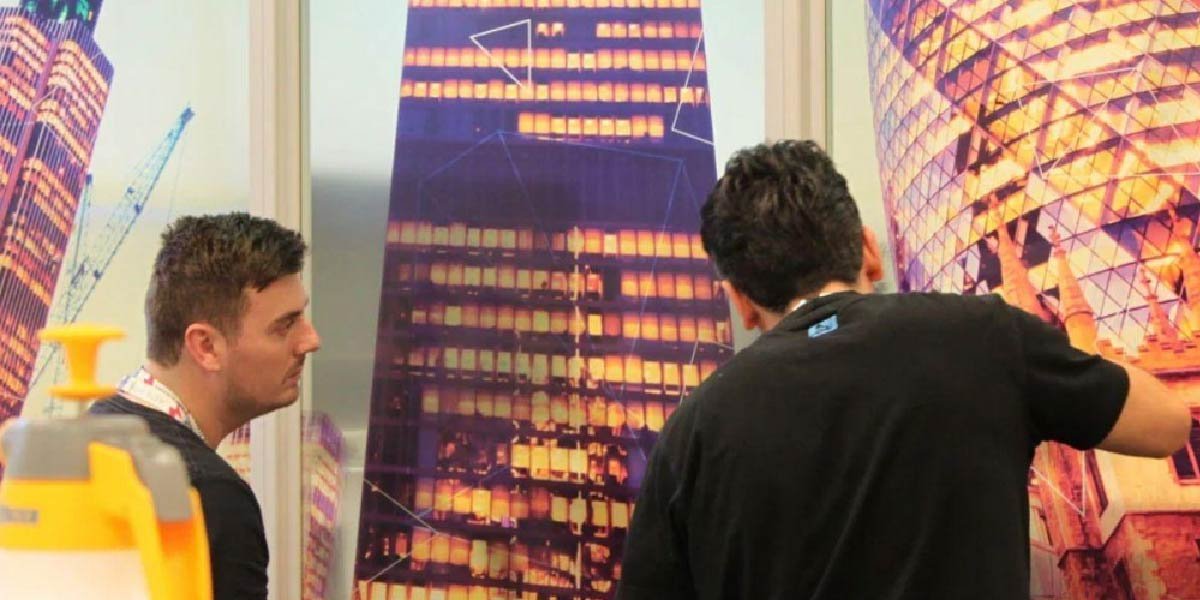Business
Why Is Office Branding Important

In many workplaces, employees can feel disconnected from the company’s core values and goals. Without reminders of the bigger picture, it’s easy for motivation and engagement to fade. That’s where office branding comes in. A well-branded space not only looks appealing but also keeps employees aligned with the company’s mission and focused on shared goals.
Office branding does more than decorate; it communicates purpose and drives culture. By incorporating branding throughout the workplace, companies can inspire collaboration, reinforce key messages, and boost productivity. From company values on the walls to interactive learning stations, the right branding helps employees feel connected to their work and the organisation’s vision.
1. Brand Identity
Office branding is all about making your space feel unmistakably you. When someone walks through the door—whether it’s a team member, client, or investor—they should instantly get a sense of who you are as a company. A well-branded office helps your name stick in people’s minds and gives off a polished, professional vibe. It’s not just about sticking a logo on a wall—it’s about telling your story visually. Your values, personality, and vision should come through in everything from your colour palette and signage, like a striking 3D acrylic sign, to your meeting rooms and breakout areas.
And when that same branding carries over to your website, social media, and packaging? That’s when the magic happens. It builds trust, boosts recognition, and makes your business feel cohesive no matter where people encounter it. Whether you’re hosting clients or welcoming new hires, a consistent brand presence helps everyone feel more connected to your purpose.
2. First Impressions On Clients And Guests
When someone walks into your office—whether it’s a client, visitor, or potential hire—they’ll form an opinion within seconds. And it’s not just about clean floors or nice furniture. A well-branded space tells a story. It shows that your company is professional, confident, and consistent with its values. From the logo on the wall to the colours, signage, and even the impact of 3D wall lettering, it signals that you care about the details—and that you’re proud of who you are.
For clients, it builds trust. They feel like they’re in capable hands. For visitors, it gives a glimpse of what your business stands for. And for current or future staff, it can make a real difference. A space that reflects your brand identity—one that feels considered and welcoming—can boost morale, spark pride in the workplace, and help attract people who genuinely connect with your culture. In a market where people value meaning just as much as money, that kind of environment can be a serious advantage.
3. Improves workplace culture
Office branding can help to create a positive workplace culture as employees feel connected to the company’s brand and each other. Staff are more likely to feel like they are part of a team and work together towards a common goal with signature branding creating a sense of belonging and community. Features like collaborative workplaces, kitchen areas, breakout rooms, and even customised 3D printed signs can be used to reinforce workplace relationships and further integrate the company’s identity into the space.
4. Helps You Stand Out from the Crowd
In today’s fast-moving business world, standing out is non-negotiable. Office branding gives your company a visual identity that’s hard to forget—it shows people who you are before you even say a word. It helps you break away from the noise, build a distinct presence, and stay top of mind.
This is especially true in industries like flexible workspaces, where new players are popping up constantly. With the sector growing at around 35% a year, strong brand positioning isn’t just a bonus—it’s how you stay competitive. Your space should feel unmistakably yours.
5. Boosted Learning
Many businesses are using office branding as an innovative way to keep their teams engaged and informed throughout the day. By integrating educational elements into the workplace environment, companies can reinforce values, share goals, and provide essential information in an interactive, visually appealing way.
This could include displaying key performance indicators (KPIs) on eye-catching posters, setting up dedicated learning stations where employees can engage with new material, designing meeting rooms with interactive features that encourage collaboration, or showcasing company magazines that highlight achievements and updates. These strategies not only keep staff up to date but also foster a culture of continuous learning, making the office an inspiring and dynamic space for both personal and professional growth.
6. Employee productivity
This naturally brings us to the idea of employee productivity. Incorporating office branding throughout the workspace can boost productivity by fostering motivation, encouraging collaboration, and constantly reminding employees of the company’s goals and expectations. Design elements like enhanced learning stations help keep staff focused, while the sense of community created in the office makes the work environment more enjoyable and social, further supporting overall performance.
Creating Impact Through Branding
Office branding goes beyond aesthetics—it’s a powerful tool that shapes workplace culture and drives productivity. By reflecting your company’s values and vision, you create an environment that motivates employees, fosters collaboration, and builds a sense of belonging. This investment not only boosts morale but also attracts and retains top talent, helping your business stand out.
The effects of strong office branding extend across all touchpoints, from your physical space to your website and social media. Consistent branding builds trust, reinforces professionalism, and leaves a lasting impression on clients, visitors, and employees. In today’s competitive world, it’s an essential way to ensure your business stands out and stays memorable.
For More Information Visit Coopermagazine
-

 Celebrity11 months ago
Celebrity11 months agoWho Is Mallory Plotnik?: The Untold Story of Phil Wickham’s Wife
-

 Celebrity10 months ago
Celebrity10 months agoWho Is Allison Butler?: The Life and Influence of Kirk Herbstreit Wife
-

 Celebrity11 months ago
Celebrity11 months agoMeet Christina Erika Carandini Lee?: All You Need To Know Christopher Lee’s Daughter
-

 Celebrity10 months ago
Celebrity10 months agoWho Is Rebecca Sneed?: All You Need To Know About Lyle Menendez’s Wife
















